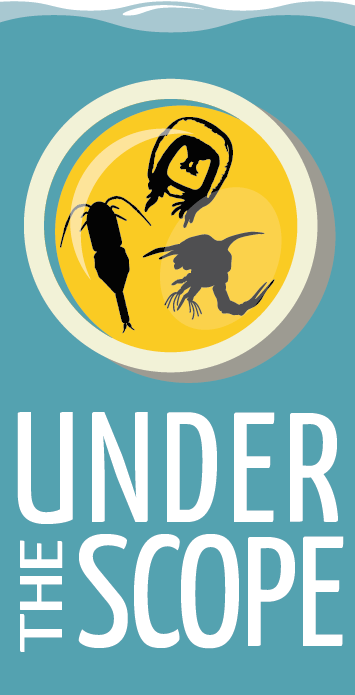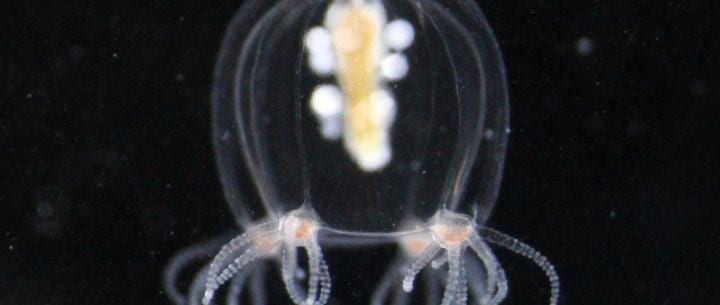Jelly-like Zooplankton



Schyphomedusae and Hydromedusae
These planktonic forms of scyphozoans and hydrozoans, which are two classes in the Phylum Cnidaria. Each is a large collection of species, and has radial symmetry. These soft-bodied creatures are often mangled in plankton collections, so identifying species might be difficult. To identify them, look for transparent bells, often with tentacles dangling from the bottom. Hydromedusae are smaller, with a thin velum extending inward from the lip of the bell toward the mouth, which is often on a long stalk called a ‘manubrium’. Schyphomedusae are generally larger, with thicker bells and frilly oral arms around the mouth. You may also see small ‘ephyra’ stages of scyphozoans in the plankton.
Here we have an ephyra pulsing. In the bottom left corner you can see a hydromedusa.
Ctenophores
Ctenophores, or comb jellies, can be one of the most abundant groups in plankton collections. Compared to hydrozoans, these animals have long bodies with rows of ‘ctenes’ going down their sides. ‘Ctenes’ are specialized structures made from fused cilia that are used for locomotion. Ctenophores are voracious predators, using mucus to capture small zooplankton.
Salps
Salps are gelatenous animals that live in the open ocean, sometimes by themselves, but often in large numbers all together. Like ctenophores, they are exceptional feeders, but instead of eating zooplankton they feed mostly on small bacteria and phytoplankton using complex nets made of mucus to trap these small cells. They are rarely found in near-shore collections. They are distiguishable from other jelly-like creatures by the circular muscle bands going around their bodies.

